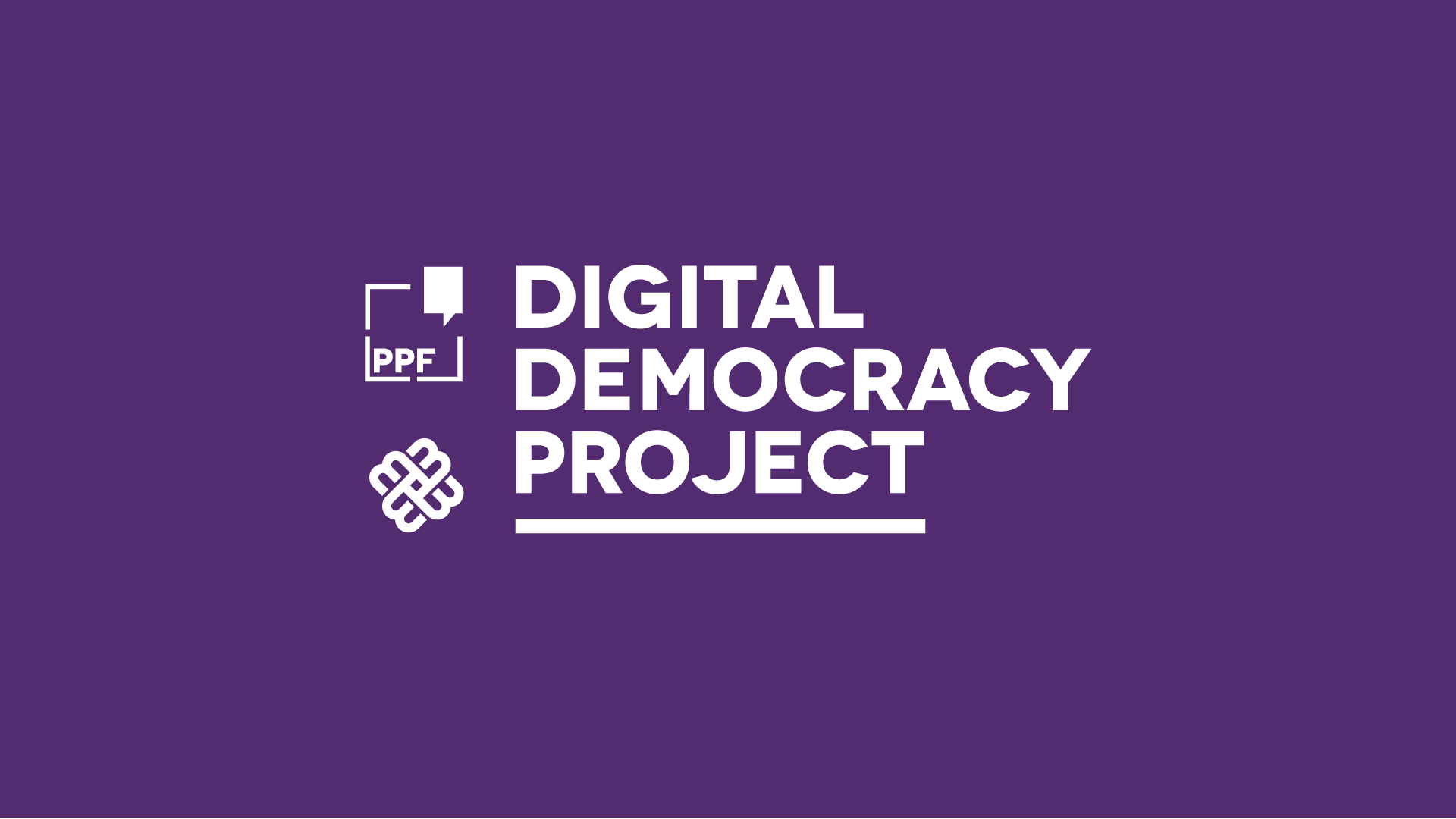
Lessons in Resilience: Canada’s Digital Media Ecosystem and the 2019 Election
Executive Summary
Researchers, policy-makers and the public at large are paying more attention to the threats that disinformation and other forms of online media manipulation pose to democratic institutions and political life. Starting with the Brexit referendum and United States election in 2016, and building through the European Parliament elections in 2019, concerns about co-ordinated disinformation campaigns organized by state or other actors, automated social media accounts (“bots”), malicious and deceptive advertising, and polarization enhanced by algorithmic “filter bubbles” have reached an all-time high.
The Digital Democracy Project (DDP) was set up to help build the international evidence base on the impact of these trends with a robust Canadian case study whose methods could be applied in other locations. The project consists of three phases. The first was a two-day workshop for journalists about disinformation threats, held in May 2019 in Toronto. The second, and the focus of this report, was researching and monitoring the digital media ecosystem in real time ahead of the Canadian federal election on Oct. 21, 2019. The third and final phase, beginning in early 2020, will involve further research and consultations with experts and public representatives to develop policy recommendations.
We launched this phase of the project in August 2019 and continued collecting data until the end of November. This work builds on the growing field of study of election integrity and, in particular, on the study of the spread and influence of media exposure (both online and offline) and of disinformation and toxic content on the behaviour of voters. Using a novel approach that combined online data analysis with a battery of representative national surveys, we sought to contextualize and better understand developing patterns of online activity with measures of media consumption, trust and partisanship.
Overall, our findings suggest the Canadian political information ecosystem is likely more resilient than that of other countries, in particular the U.S., due to a populace with relatively high trust in the traditional news media, relatively homogenous media preferences with only a marginal role for hyperpartisan news, high levels of political interest and knowledge, and — despite online fragmentation — fairly low levels of ideological polarization overall. While we do find affective polarization, which involves how individuals feel about other parties and their supporters, we find less polarization on issues, which has been a key point of vulnerability in other international elections.
Despite some worries about automated activity being used to game trending hashtags on Twitter or the presence of a few disreputable online outlets, our research suggests their impact was limited. While there remain significant blind spots in the online ecosystem caused by limited data access for researchers, based on the communication we could see, we did not find evidence of any impact attributable to co-ordinated disinformation campaigns.
Looking forward, however, we find evidence to suggest potential future vulnerabilities, most of which are related to growing partisanship and polarization, as well as the segmentation of the populace into online information environments that reinforce existing world views.
Main Findings
Media Consumption: There is broad concern about hyperpartisan news outlets, drawing from the U.S. experience of the important role played by far-right news outlets influencing the media agenda in the 2016 election.[1] By contrast, we find that news sources catering to specific partisan audiences play a very small role in Canada, with only 10% of survey respondents reporting they consume news from such sources. In fact, media preferences are relatively homogenous across party lines, with most Canadians consuming information from reputable and recognized mainstream outlets such as the CBC, CTV and Global News. This generally holds true for sharing patterns on social media as well, although sharing and consumption of partisan-congenial outlets is somewhat higher online. It’s worth noting that television remains the dominant mode of consuming the news for Canadians — an often under-examined space in the era of social media.
Media Trust and Literacy: Generally, Canadians have a fair amount of trust in the news media. We find Canadians trust the top media outlets at similar levels as they trust friends and family, in line with comparative studies that have consistently measured Canadian trust in media as among the highest in the world.[2] In certain ways, Canadians appear to demonstrate important elements of media literacy, rating hyperpartisan or disreputable news outlets very poorly and self-reporting high levels of skepticism in stories that they see on social media.
Political Knowledge: Canadians are highly interested in and reasonably knowledgeable about politics. While concerns about the corrupting effects of online political discourse have become a popular critique, our findings suggest that even after controlling for a range of socio-economic factors (age, gender, region, language and employment status), those who participate in online conversations are more interested in politics, more knowledgeable, and tend to feel more personally capable of effecting political change. We also find that people with high news exposure, somewhat surprisingly, are not only more likely to be more informed about public policy than those who don’t follow the news, but also more misinformed. This does not mean journalists deliberately misinform people; rather, people with strong political beliefs may selectively engage with the information provided by the media such that they draw incorrect conclusions to support their existing views. This suggests that political news as currently delivered to Canadians might not be an antidote to misinformation.
Fact-Checking: We find a huge appetite for fact-checking among the general public, with almost three-quarters of our representative sample of Canadians wanting to see more fact-checking in journalism. Reassuringly, this desire for fact-checking is linked to trust in media, suggesting it is motivated positively by a desire for better journalism and a more informed public, rather than negatively by a low-trust “fake news” discourse where journalists are suspect and thus need to be constantly fact-checked. While the fact-checking infrastructure set up for the Canadian election was fragmented across various news outlets and never had the type of co-ordination and collaboration that has been deployed in other contexts, our findings leave us hopeful about the ability of fact-checking to correct misperceptions. There are important limits to fact-checking, however. It is easier to improve the factual knowledge of those who are simply uninformed than those who are misinformed, as the latter are less likely to reverse a persistently held falsehood after receiving a fact-check. As well, we did not find significant evidence that fact-checks on their own have meaningful downstream effects on entrenched policy attitudes. For example, fact-checks on climate change appear to have little effect on Canadians’ position on carbon taxes.
Polarization: We looked at various measures of polarization in Canada. We find that Canadians generally tend to be ideologically moderate rather than clustering on opposite sides of an ideological spectrum. However, we find the beginnings of a potentially concerning trend of affective polarization, where committed partisans have substantially more negative feelings toward members of ideologically opposed parties. Interestingly, we found little evidence that the tense 2019 Canadian election influenced levels of affective polarization, which remained relatively stable throughout the campaign. Nor did we find evidence that social media use exacerbates affective polarization, which seems to be driven by ideology, partisanship and perceptions of party extremity.
Echo Chambers: Our tracking of online news consumption and our survey experiments together suggest Canadians are substantially less likely to pick partisan news sources and stories than one might expect. However, while Canadians are not generally drawn to partisan-congenial news sources, Twitter users do engage with partisan-congenial content from various sources, in line with previous research that emphasizes homophily in Twitter networks. Canadians are quite selective in the content they share and the people they follow on Twitter, with many committed partisan accounts that only follow and share content from their preferred party. This is a potentially worrying trend in the nature of our online political discourse.
Toxic Speech: A major concern leading into this election, as well as about the online discourse more broadly, is that the ability to post anonymously on platforms such as Twitter and Reddit may lead users to feel more comfortable posting hateful language directed at political candidates or other users. The proportion of tweets containing hateful language remained low (less than 2%) even in negative hashtags. We found hate terms were more likely to appear in tweets that express negative sentiments. Left-leaning Twitter users were more likely to use classist terms such as “hillbilly,” while right-leaning users most often used gendered and sexualized slurs.
Inauthentic Activity: Significant media attention has been devoted to the possibility that political actors are using co-ordinated social media accounts to try to influence online discourse. Because of the proven unreliability of bot-detection tools, establishing the level of such inauthentic activity is virtually impossible. However, if bot-detection methods are applied to our data, we find the vast majority of accounts engaging in Canadian political discourse that have not been taken down by Twitter are not flagged as inauthentic. We further investigated claims of foreign influence by accounts that include Make America Great Again (MAGA) in their profiles. Despite a higher proportion of likely automated accounts among MAGA users than the overall pool of users we tested, neither automated nor manual analysis uncovered evidence of co-ordinated behaviour that we would label election manipulation or interference.
Scandals: We examined two major stories that broke during the 2019 election: the emergence of photos of a pre-politics Justin Trudeau in blackface and the revelation that Andrew Scheer was not an insurance broker as he claimed. Examining online behaviour around these two stories provides insight into the online ecosystem; when a scandal emerges as suddenly as these ones did, it allows us to observe how social media behaviour changes in response. In both cases, we find that the peak of activity surrounding the revelations occurred for approximately 48 hours, with declining attention followed by very little broad-based interest five to seven days after the story first broke. We find that interest from journalists and candidates declined at a similar pace as the general public, and that Facebook and Twitter users have similar interest and decay patterns. We also find that attention to these stories was largely isolated to specific partisan-motivated communities, with different partisan groups reacting very differently to the two stories and showing a strong propensity to favour discussion of opposing parties’ scandals. This is a recurring theme in the broader report, with individuals being motivated to consume and share content that supports their preferred candidate, leader or party.
Disinformation: Finally, throughout the election, we looked actively for disinformation — false information related to political issues disseminated with the intent to mislead the Canadian public, disrupt public democratic dialogue and potentially affect the outcome of the vote. Our finding is that disinformation did not play a major role in the 2019 Canadian election campaign. This is consistent with the findings of many other investigations by journalists, academics, government agencies and officials, and the private sector. That is not to say there were no instances of disinformation, but what there was generally did not appear co-ordinated and had limited impact.
While it is impossible to prove the counterfactual, Canada had a number of factors working in its favour leading into the election. Coming after a number of international elections where disinformation was a serious problem, we were able to learn from the tactics of both those seeking to undermine election integrity and those trying to protect it. This allowed the government, researchers, journalists and civil society to mobilize. As we show in the report, despite some worrying trends, Canada also has a strong baseline that likely inoculated us from some of the harms seen in other jurisdictions. Overall, this is a good news — rather than a fake news — story.
[1] Faris, R.M., et al. 2017. Partisanship, Propaganda, and Disinformation: Online Media and the 2016 U.S. Presidential Election. Berkman Klein Center for Internet & Society.
[2] Newman, N., et al. 2019. Reuters Institute Digital News Report 2019. Reuters Institute for the Study of Journalism.





